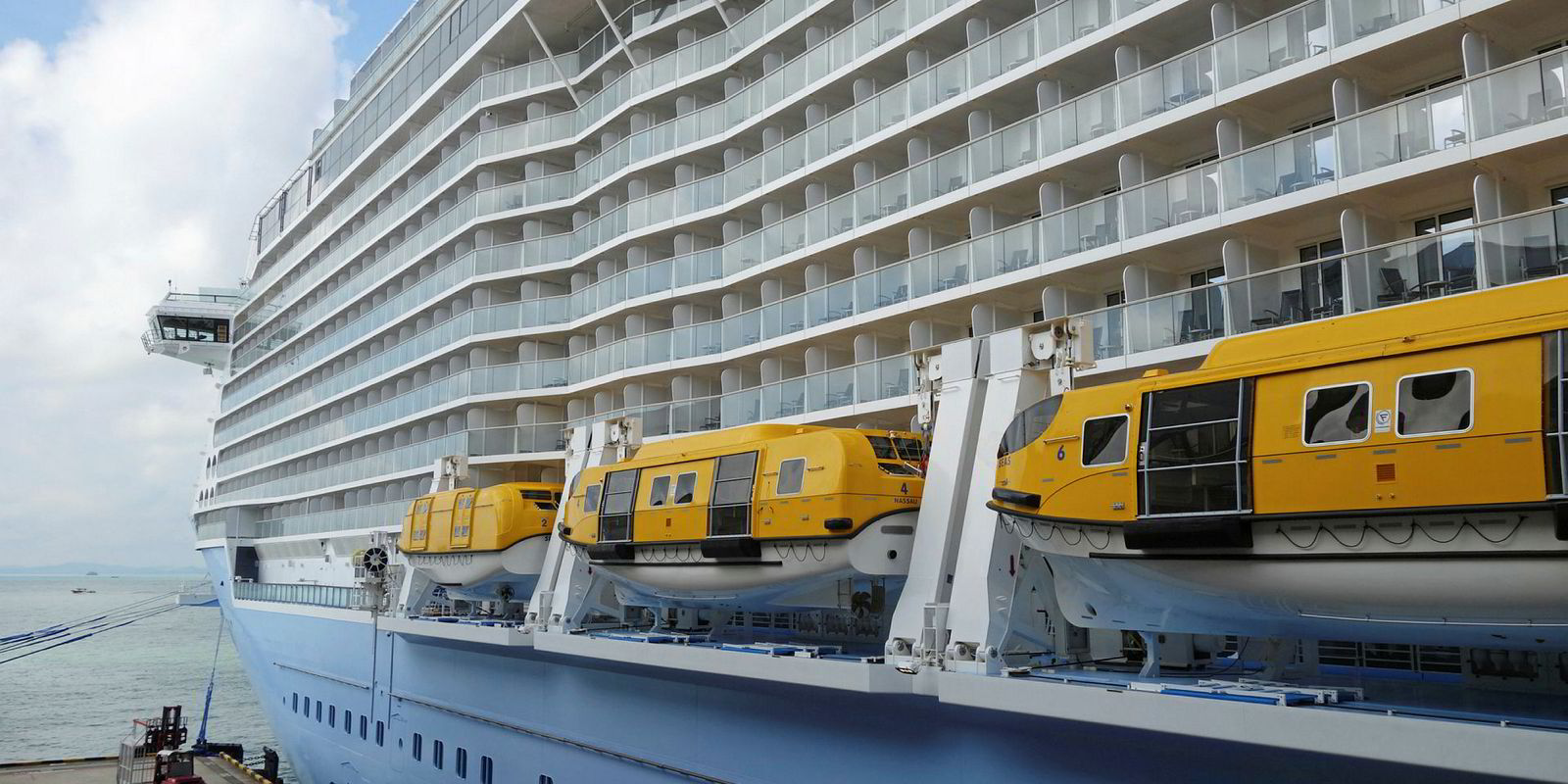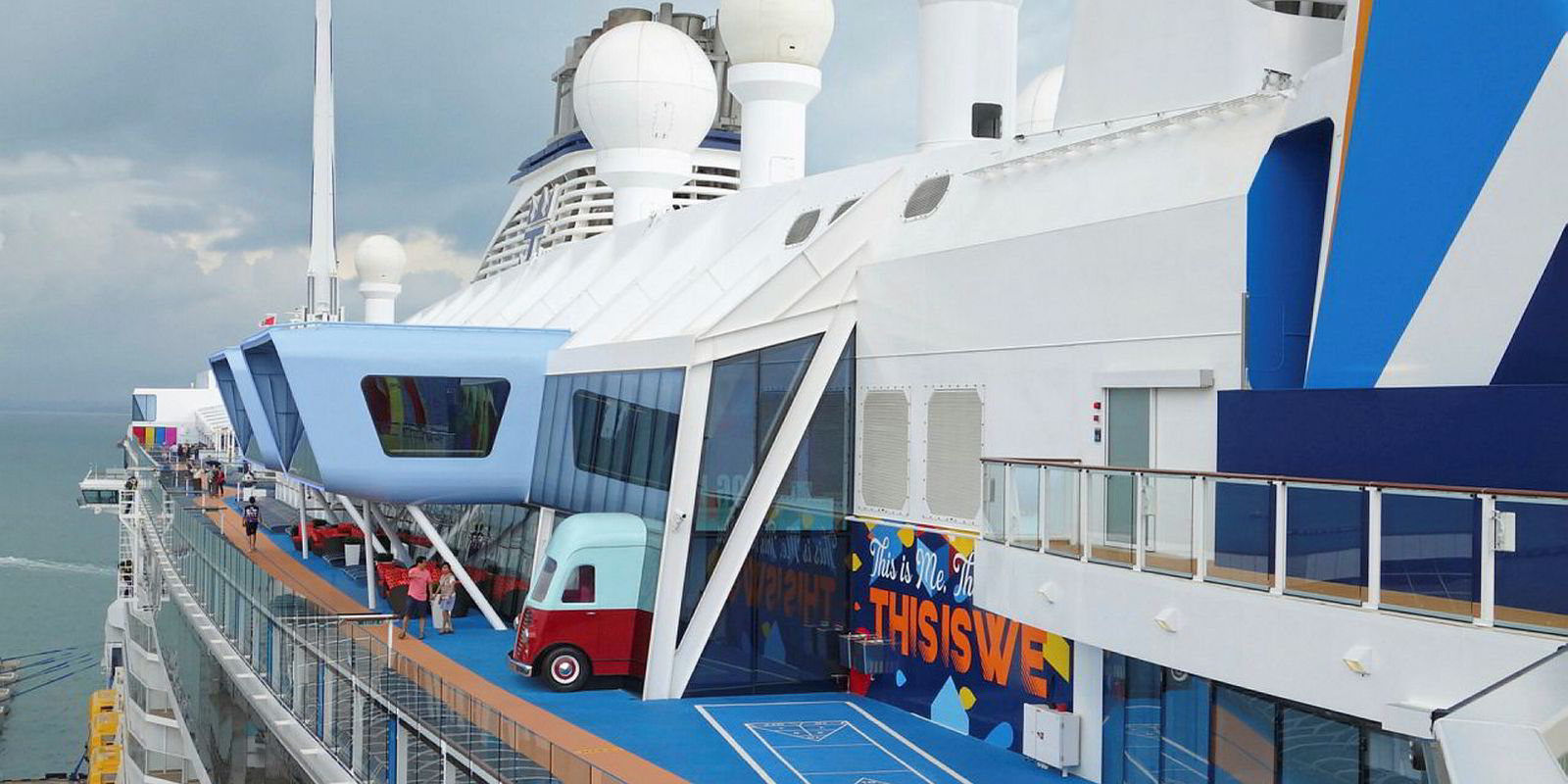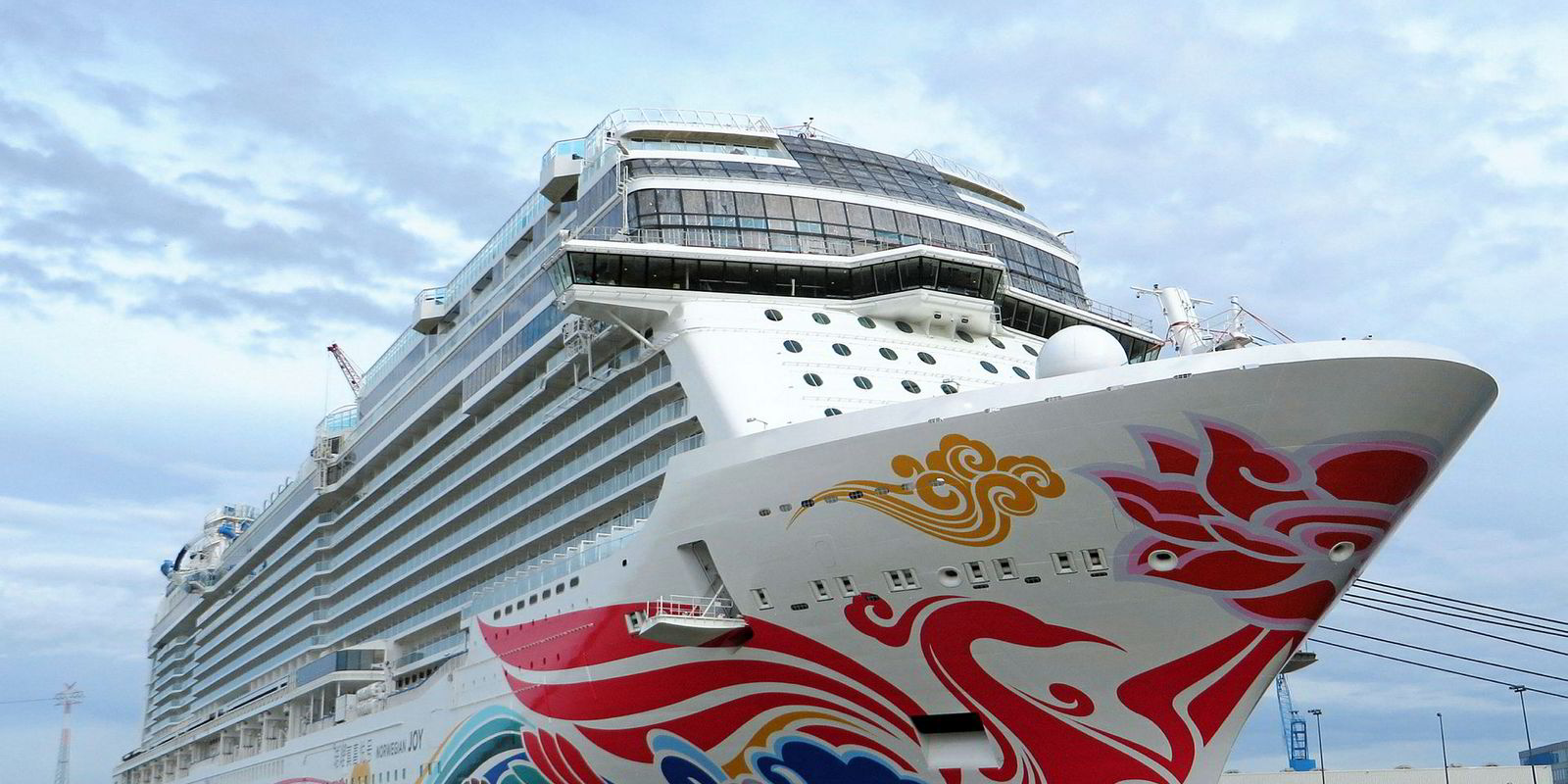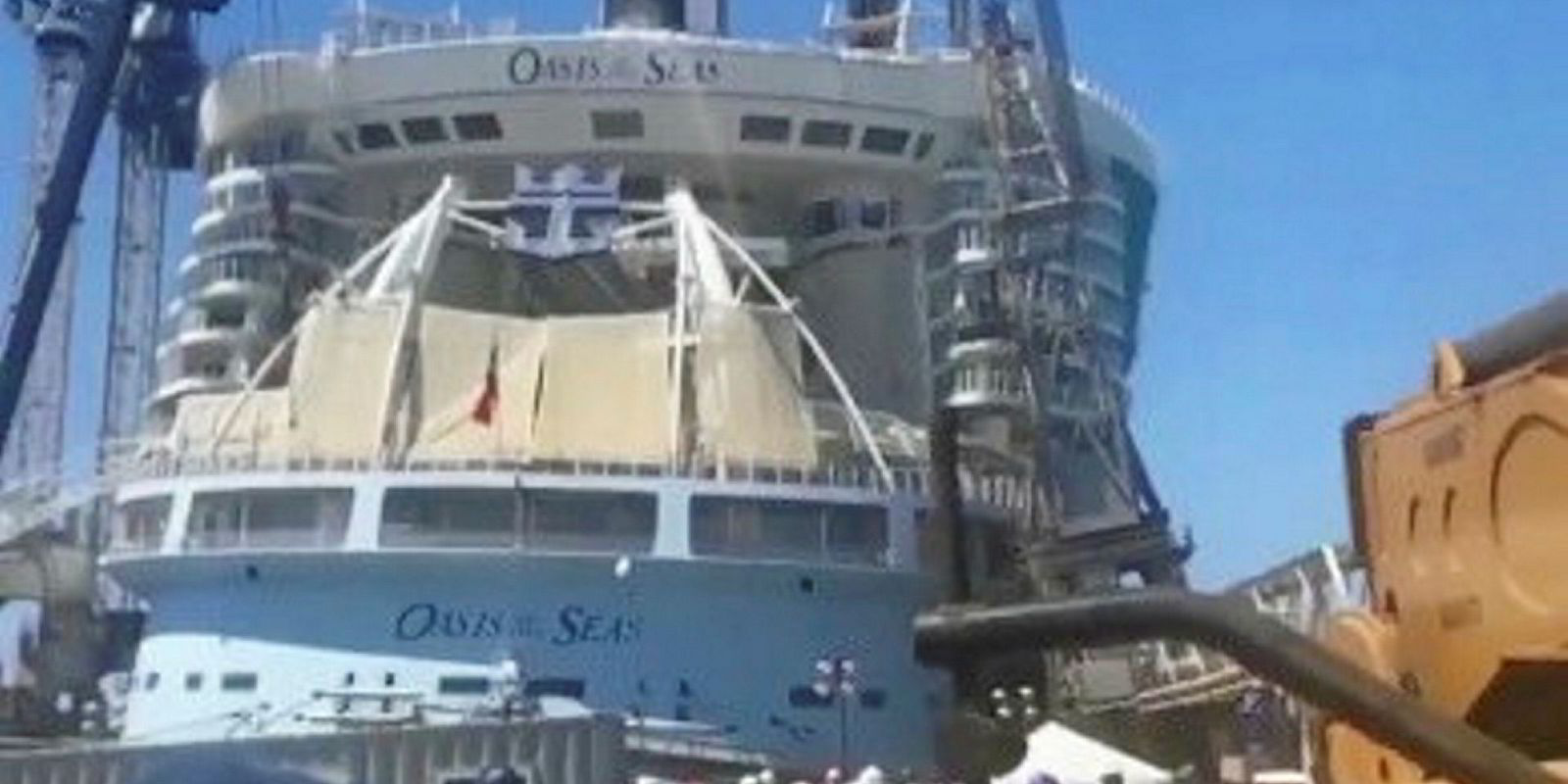In the past two years there has been a contraction in the Chinese cruise market.
Touted until then as the industry's fastest and most promising growth area, the market suffered from oversupply as cruise operators rushed in, creating a deluge of capacity. This resulted in many larger cruiseships being deployed elsewhere and some operators quitting China entirely.
Royal Caribbean International (RCI) is hoping to buck that trend. Its 169,000-gt cruiseship newbuilding Spectrum of the Seas is on its way from builders Meyer Werft in Papenburg, Germany, to its future home port of Shanghai.
Fleet strategy revealed
Built at a cost of $1.25bn, the 5,622-passenger vessel stopped in Singapore this week, where Gavin Smith, senior vice president of international for parent Royal Caribbean Cruises, outlined the company’s future fleet strategy for China and the rest of Asia.
“We believe the Spectrum of the Seas is the beginning of renewed growth in China,” he told TradeWinds on the sidelines of a ceremony welcoming the ship to the Lion City.
The deployment will give RCI a total capacity of 10,527 passenger berths in the Chinese market, spread over two ships.
So what makes RCI confident of growth in China, especially as many of their peers have scaled back capacity in the region, either by deploying smaller ships or pulling capacity altogether.
Smith indicates that too many operators rushed into China too quickly, but adds the redeployment of vessels has helped ease the issue of overcapacity.
“The Chinese cruise market has stabilised,” he said.

He said new ships, strong market knowledge and a solid brand are needed to succeed in China.
“We have been the market leader in China for the past decade," he said. "We have long-standing relationships with government officials, port authorities and travel distributors, so it is working for us.
“We also recognise that while we have to tailor the product to the market, we still have to maintain our strong international brand standards.”
Seasonal market
Smith concedes the Chinese cruise market has turned out to be more seasonal than was first anticipated. Operating cruiseships out of Shanghai and Tianjin becomes challenging during the winter months because of the weather.
“In theory, it should be year-round because of the size of the market, but the reality is that it is seasonal,” he said.
During the off season, RCI deploys its China-based ships to Singapore and Australia. The Spectrum of the Seas will operate year-round out of Shanghai this year, although in late 2020 it will be based out of Hong Kong during the winter months.
Smith said RCI is exploring the possibility of using Shenzhen as a base port in the future.
While China has turned out to be seasonal, Smith said RCI had no problem filling its ships elsewhere in Asia during the winter months.

He described Singapore as being at the heart of RCI’s Asian growth plans and has been consistently registering double-digit growth.
The 137,000-gt, 4,269-passenger Voyager of the Seas (built 1999) is the company’s current Singapore-based ship, operating on a seasonal basis.
Nomadic existence
In November, the 168,000-gt, 4,905-passenger Quantum of the Seas (built 2014) will take over in Singapore, operating on a six-month season. It will return in late 2020 for an extended seven-month period.
The Voyager of the Seas is set to lead a more nomadic existence in the future.
Following a major refit in Singapore in September, the ship will head to Australia, where it will operate for several months before moving back to Asia in the spring of 2020 to operate out of Hong Kong and Japan.








